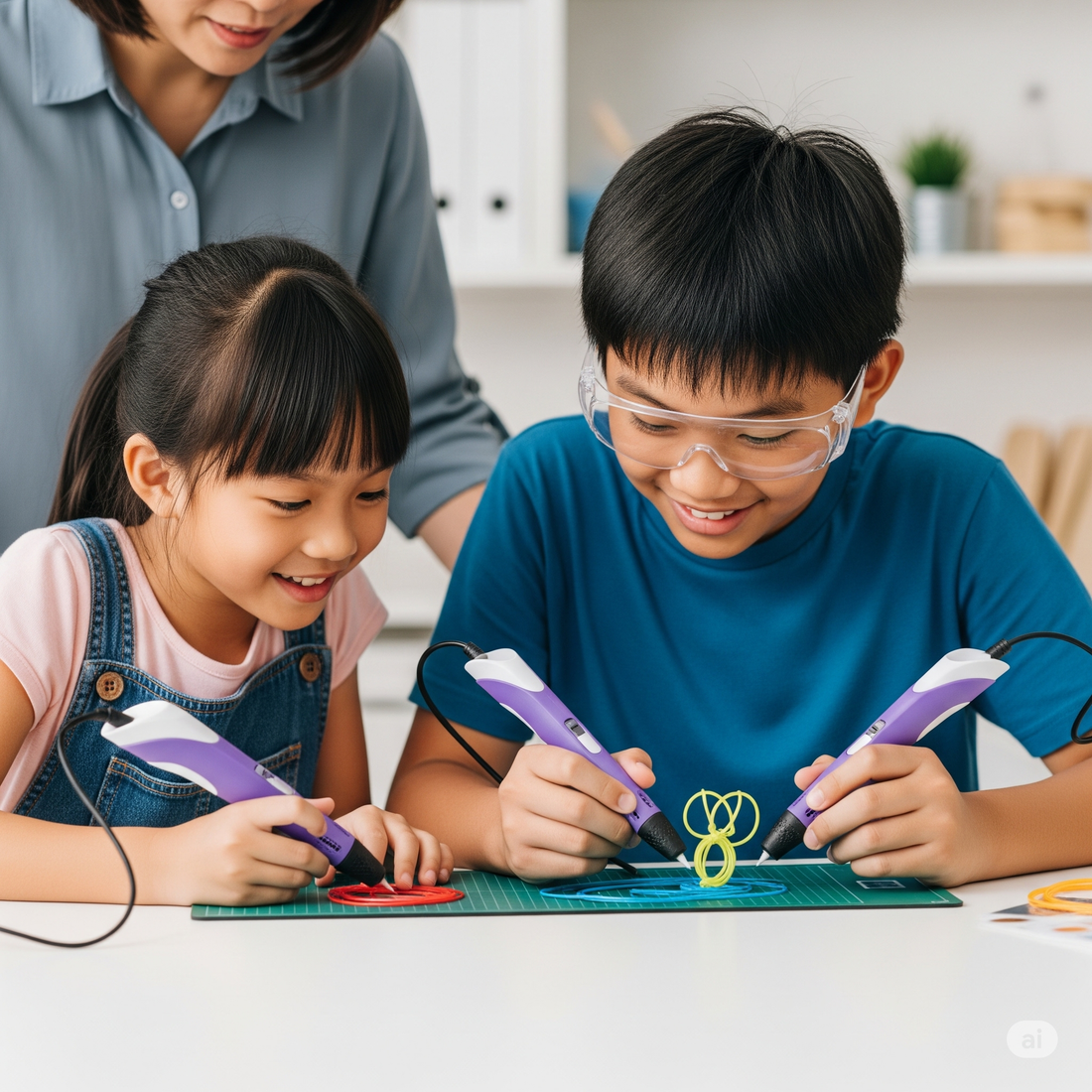
Essential Safety Tips for Kids Using 3D Pens
Share
3D pens are fun, educational, and a brilliant way for kids to explore creativity through hands-on design. But as with any tool that involves heat and electronics, safety should always come first. Whether you're a parent buying your child's first 3D pen or a teacher running a creative workshop, understanding the key 3D pen safety tips for kids is crucial.
In this guide, we’ll walk you through everything you need to know from choosing the right pen to supervising safe usage, so your child can enjoy all the benefits of 3D drawing without worry.
Why Safety Matters with 3D Pens
Even though many 3D pens for children are designed with safety in mind, they still involve melting plastic at moderate temperatures. While the risk is low when used correctly, kids may accidentally touch the tip, mishandle hot filament, or use the device unsupervised.
That's why following proper 3D pen safety tips for kids will ensure a safe, worry-free environment that still allows for loads of fun.
How 3D Pens Work (Quick Recap)
A 3D pen heats up plastic filament (usually PLA or ABS) and pushes it through the tip like a glue gun. The plastic cools and hardens quickly, allowing your child to "draw" structures in three dimensions.
Educational pens use low-temperature technology and softer filament, which are much safer for small hands. Still, it’s important to teach your child how to use them responsibly.
3D Pen Safety Tips for Kids
Here are the most important 3D pen safety tips for kids every parent and educator should follow:
🔥 Always Supervise Young Children
For kids under 10, adult supervision is highly recommended. Even with low-heat pens, children can get excited and forget about safety. Be there to guide them on how to handle the pen properly.
💡 Choose a Child-Safe 3D Pen
Not all pens are made for kids. Look for features like:
- Low-heat or cold-nozzle technology
- Soft, biodegradable PLA filament
- Simple one-button control
- Automatic shut-off after a few minutes of inactivity
An example of a safe option is the myFirst 3D Pen Artist, which is built specifically for younger kids with extra safety in mind.

🧤 Avoid Touching the Tip
Teach your child that the tip of the pen can become hot even with low-temp models. Encourage them to always rest the pen on its holder when not in use.
Pro tip: Use a silicone mat or heat-safe surface while working.
🪑 Use the Pen at a Proper Workspace
Set up a designated area for using the 3D pen. Ideally a flat, ventilated table away from soft furnishings, curtains, or carpets. This helps contain any stray plastic and creates a focused, distraction-free zone.
🧽 Keep the Area Clean and Organised
Loose filament, scraps, and leftover bits should be cleaned up after each session. It’s not only safer but teaches good habits too. Store the pen and filaments in a box or pouch away from very young siblings.
🧪 Stick to Safe Filaments
Only use recommended filaments for the specific pen. PLA (Polylactic Acid) is the best option for kids because:
- It melts at lower temperatures
- It’s made from natural materials like corn starch
- It doesn’t release harmful fumes
Avoid using ABS unless the pen is in a well-ventilated space and under supervision.
📵 No Multitasking While Using the Pen
Remind your child not to eat, drink, or get distracted (like watching YouTube or chatting) while using the pen. A 3D pen requires focus, even for simple projects.
🔌Unplug or Power Off After Use
One of the most overlooked 3D pen safety tips for kids is remembering to turn off and unplug the pen when finished. It ensures the device doesn’t stay heated unnecessarily and teaches responsible use of electronics.
🛑 Stop Immediately if Something Feels Off
If the pen smells strange, jams, or feels too hot, stop using it and let an adult check. Never force filament through or attempt to disassemble the pen.
👨👧 Make Safety a Routine
Safety should be part of every creative session. Before starting, do a quick checklist:
- Is the pen working properly?
- Is the mat clean?
- Is adult supervision available?
Creating this habit early builds awareness and makes creativity stress-free.
Safety Tips for Group Activities or Schools
If you’re using 3D pens in a classroom or workshop setting:
- Limit use to small groups of 4–6 at a time
- Assign one pen per child where possible
- Provide safety gloves or finger protectors if needed
- Use stencils or templates to minimise misuse
These 3D pen safety tips for kids apply in all learning environments, not just at home.
Using a 3D pen is one of the most exciting ways kids can explore art, science, and technology all at once. But to make the experience truly enjoyable, safety has to come first. By following these 3D pen safety tips for kids, you’ll create a fun, confident space where your child can build and learn with peace of mind.
From birthday gifts to classroom projects, a 3D pen can be a gateway to imagination as long as it's used safely.
Looking for a Safe 3D Pen?
We recommend starting with the myFirst 3D Pen Artist, a wireless, low-temperature pen designed specifically for children. It includes soft filament, simple controls, and kid-friendly design features that make it ideal for first-time users
💡Because creativity should be exciting not risky. Follow these 3D pen safety tips for kids and watch your young creator build their world safely, layer by layer.

